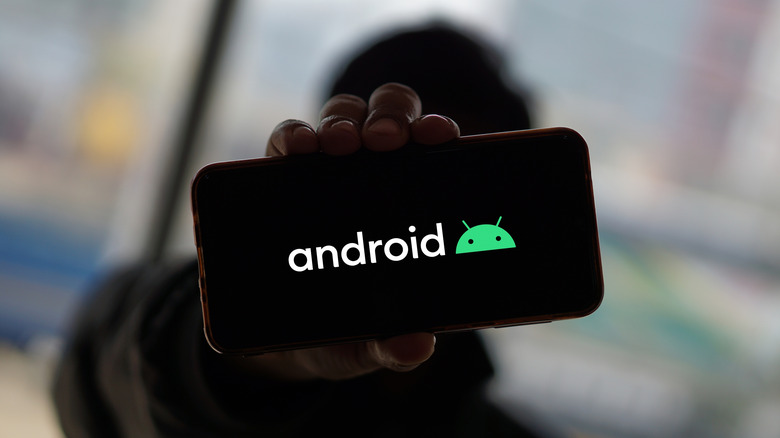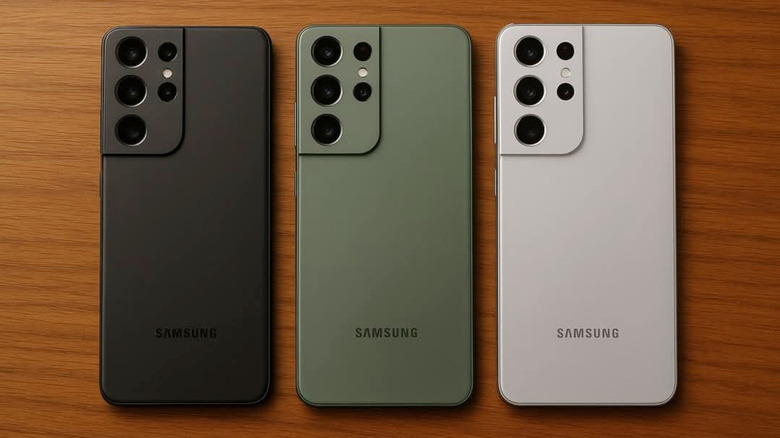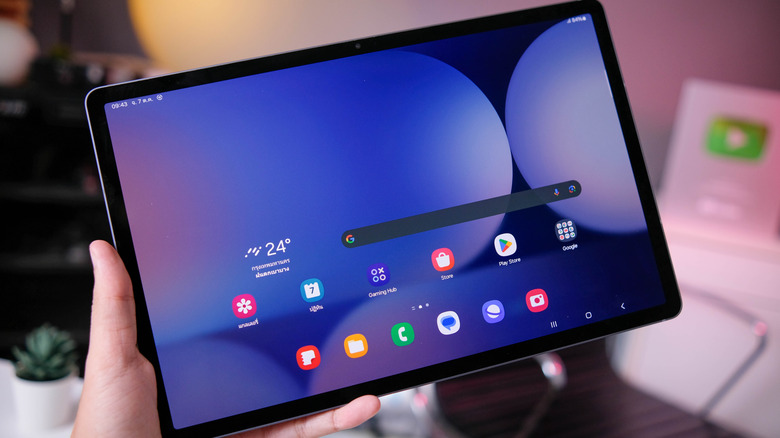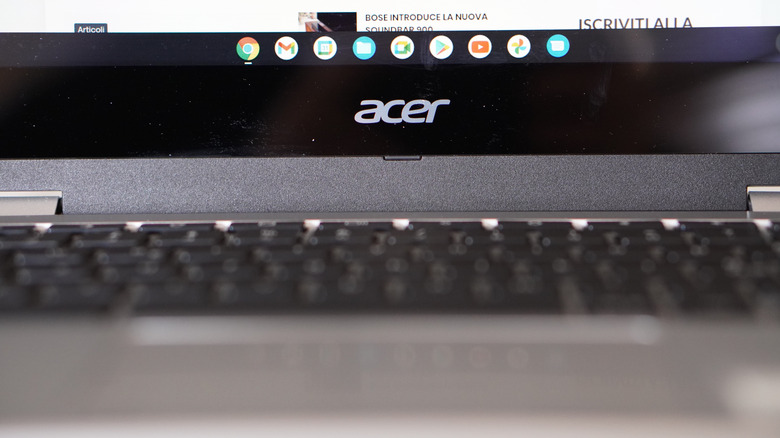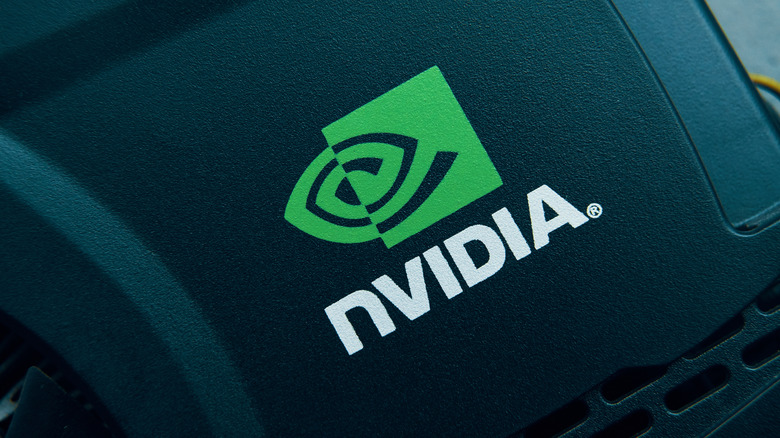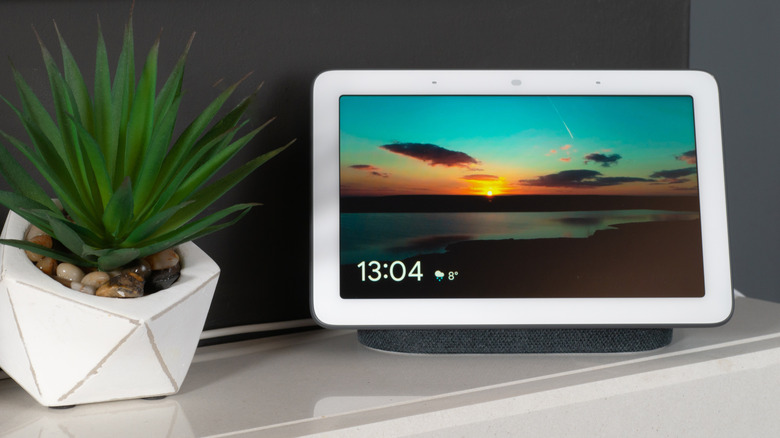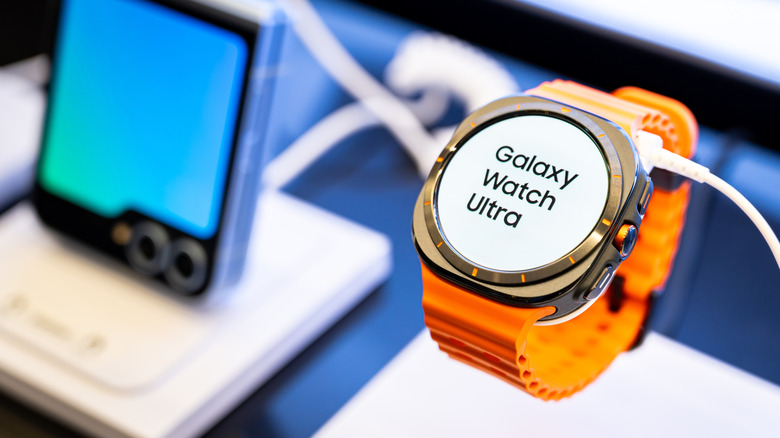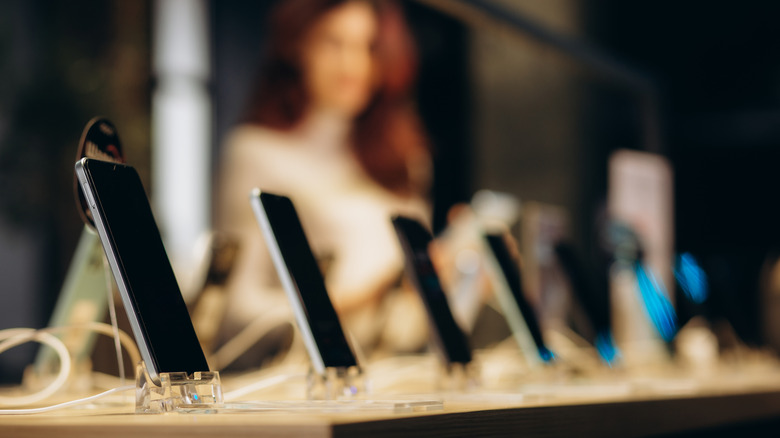5 Android Products Worth Buying Used, And 3 To Avoid
We may receive a commission on purchases made from links.
Android devices are everywhere, with smartphones, tablets, watches, and so much more. There's a model out there for every single budget, with new products dropping yearly. This constant cycle creates a massive market for used gear where you can score some incredible deals on tech that's still perfectly powerful. Getting a gently used Android phone is the perfect way to get those premium features without the jaw-dropping price tag. It lets you stretch your cash way further or even just try out a new brand or device type without making a huge financial commitment.
Unfortunately, the used market can be a total minefield. Not all pre-owned Android gadgets are worth your time, and some of them, even if they look like a steal, are just going to cause a headache down the road. You've got to think about stuff like how long it'll keep getting software updates, how much the battery has degraded, how long the components will last, and any potential hidden problems that can turn a seemingly sweet deal into a costly regret.
To make the right purchase, you need to know which Android products hold up well into their second life and which ones you should absolutely steer clear of. That's why we're going to dive into the ins and outs of buying used Android devices to help you figure out the real gems from the absolute duds, and make sure your next pre-owned tech buy is a smart one.
Buy: Flagship Smartphones
Older flagship Android smartphones, like the Samsung Galaxy S-series (like the S21 or the S22) or the Google Pixel (6 Pro or Pixel 7), are actually fantastic choices if you're buying used or refurbished because they stay top-tier long after they first come out. These flagships are built with premium parts and materials — definitely Android phones to be excited about in 2025.
High-end processors are a big part of that longevity, delivering performance that really stands the test of time and easily handling demanding stuff like multitasking and gaming way better and longer than a new budget phone could. Plus, you can't forget the camera systems. A phone like the Galaxy S22, for example, will get you sharper, more detailed images, a much better dynamic range, and even enhanced zoom lenses. Other premium features, like an IP68 waterproof rating, just make them more durable, so a refurbished model is a particularly sweet deal.
Crucially, companies like Google and Samsung are absolute leaders when it comes to long-term software support, which is essential for a device to stay usable and secure over time. Many older flagship Android phones get extended OS and security updates. For instance, the Pixel 6 and Pixel 7 series are set to get major OS upgrades and five years of security patches, and the newer Pixels are even getting support for longer.
Buy: Premium Tablets
High-end Android tablets like the Samsung Galaxy Tab S-series (think Tab S7, the S8, and S9) are built like tanks, and are seriously premium devices designed to last you a good few years. If you want to take advantage of this longevity and save a ton of cash, buying these luxury tablets refurbished (renewed) is the way to go, since they come with an amazon warranty.
These things are legitimate mobile workstations thanks to their powerful guts and specialized features. A huge part of that productivity comes from what Samsung DeX does, basically turning the tablet into a desktop-like experience when you connect it to an external monitor and keyboard. These devices hold up so well because they're packed with features you usually only see on top-tier tech, like massive, high-resolution screens. You also get that vital S Pen support, which is great for specialized activities like note-taking in class, drawing, and annotating documents.
Even refurbished older models, like the Galaxy Tab S7 and S8, are still plenty powerful for heavy tasks like work, watching videos, and casual gaming. The premium build means the hardware doesn't lose its punch quickly. If you buy refurbished from a reputable source, you minimize the risk because these tablets go through tough testing, often get replaced parts, and usually come with a solid warranty, anywhere from 90 days to a year.
Buy: Chromebooks
Refurbished Android Chromebooks, especially those mid-range or Chromebook Plus models like the Acer Chromebook Plus 514, the Lenovo IdeaPad Flex 5i Chromebook Plus, or the Asus Chromebook Plus CX34, are an incredible deal if you need a dependable machine for school, basic work, or just browsing the web. This is great tech that's still worth buying used if you don't want to buy it new. If you're not a fan of Chromebooks, you should look for an older laptop that is worth buying used.
Chromebooks are already simple, fast, and secure thanks to ChromeOS. Going the refurbished route is super cost-effective, letting you save a good amount of money compared to buying a brand-new one. The usable life and general snappiness of refurbished Chromebooks are way better now because of updated hardware and much longer software support policies.
The Chromebook Plus models are certified by Google to meet strong modern performance standards. They usually come with a fast processor, 8GB of RAM, and 128GB of storage. These top-tier specs mean the device can handle educational apps, browsing, and multitasking effectively for years to come. Recently released Chromebook Plus models, like the ones that came out in 2023, have Auto Update Expiration dates that stretch far into the future, often to 2032 or later. That gives you nearly a decade of guaranteed updates.
Buy: Android/Google TV Streaming Devices
High-end Android and Google TV streamers like the Nvidia Shield are way more than just a basic streaming box; they're basically powerful mini-computers. The main reason to grab one of these refurbished is the fantastic hardware inside. That premium gear makes sure you get great performance and can use all the cool, advanced features for a long time, even years after the device first came out.
For example, some models of the Shield rock the powerful Tegra X1 processor, which has the muscle to handle tough stuff like game streaming and running media apps like Plex or Kodi. This hardware is often over-specced compared to what you'd need for just simple streaming, so even older models have better specs than competitors like Roku. That extra power means you get better features and a better picture. The Nvidia Shield is comparable to the Apple 4K TV as a home theater, but you can always pick an Apple 4K TV if that's what you prefer.
I like Nvidia because of the company's commitment to updates. Even the original Shield from 2015 is still getting major updates, including things like frame rate matching and security patches. That kind of longevity is super rare in consumer electronics. This ongoing support, combined with the big savings you get from buying refurbished, makes older, high-end Android TV boxes highly recommended and durable purchases.
Buy: Smart Hubs
Smart displays like the Google Nest Hub are basically the command center for a smart home, giving you integrated control over all your devices, media streaming, and communication. You get access to all your smart home controls, which means you can view camera feeds and use the built-in Google Assistant to control things with your voice. It's smart to put them in high-traffic spots like the kitchen for pulling up recipes or streaming music while you cook.
The Nest Hub, especially the second generation model, which we loved in our review, can even double as a digital photo frame for anyone who uses Google Photos, which adds a really nice, personalized touch. A refurbished Google Nest Hub or another smart display is a seriously good idea for a secondhand purchase because these devices just sit there. They don't get tossed around like phones or smartwatches, so there's practically no physical wear and tear. Since they're plugged in all the time, battery life isn't a headache, which is one of the biggest risks you face when buying refurbished mobile gear.
What's even better is that their main function is all about the software. Sure, older hardware might feel a little sluggish with the touchscreen eventually, but Google is famous for constantly updating the Smart Home OS, which is usually a win for these devices. This makes buying a refurbished smart hub a very safe way to get a discounted price on a used item.
Avoid: Smartwatches
If you're thinking about grabbing a used or refurbished Android smartwatch, you might want to hold off. Honestly, they're generally a bad idea to buy secondhand because of a mix of heavy wear and tear and the fact that they're going to get outdated fast on the software side of things.
Some specific models carry an even bigger risk. Take the Galaxy Watch 4 and Galaxy Watch 4 Classic; they were Samsung's first ones running the modern Wear OS, and they're officially set to hit their end-of-life for major Wear OS upgrades in 2025. That means if you buy a refurbished unit now, you're investing in a watch that will stop getting security and feature updates. A device without software support is vulnerable to security flaws that can't be patched. To be fair, a refurbished device from a reputable seller usually includes a warranty, but that's not going to fix the updates.
Also, you're just trusting the previous owner to have treated the watch well. The lack of software longevity and the high rate of battery decline just make a refurbished Android smartwatch a poor value proposition overall. Smartwatches are demanding little devices; you wear them all day, they're constantly moving, and you're charging them all the time. This just speeds up how fast the battery degrades.
Avoid: Standard Android E-Readers
If you're thinking about grabbing a refurbished Android e-reader, especially an older one like the Boox Note 1 or Note 2, Nova 2, Poke 2, or really any device running Android 10 or older, you might want to seriously rethink that. You're looking at some big problems with outdated software and super fragile hardware. While Android e-readers, like the ones from Onyx Boox, are awesome because they let you install reading apps from everywhere, that flexibility kind of falls apart thanks to the manufacturers' update policies.
Unlike the big-name Android flagships, these e-readers almost always get exactly zero major Android version updates once they've launched. For example, a 2021 Boox model might still be running Android 11, and those older used models could be stuck on Android 9 or 10. This older OS is a real problem because an e-reader stuck on Android 10 or 11 is going to struggle to run modern apps really soon. To be fair, some reading apps like KOReader or Moon Reader still support ancient Android versions, but many of the popular apps force you to update. If your older device can't meet the new OS requirement, it's almost unusable. Plus, running an outdated Android version is a big security risk.
Avoid: Low-End and Budget Smartphones
You generally want to steer clear of the cheapest Android phones when you're looking at refurbished devices, especially entry-level ones like the Samsung Galaxy A03, A04e, A13, and A14. The problem is, these phones just aren't built to be useful or last as long as their more top-tier counterparts. Even though buying refurbished saves you a ton of money, the hardware limitations of these low-end smartphones create huge problems for how long you can actually use them. They usually come with seriously low RAM that isn't normally advertised, like just 2GB or 3GB, and much slower processors. Modern apps like WhatsApp and Instagram are getting more and more demanding and resource-intensive, so devices with small RAM and slow chipsets get painfully slow and really struggle with multitasking or just running apps.
Users who depend on these phones are going to deal with constant system-wide lag, stuttering, and a lot of frustration due to the low RAM. This turns what seemed like a smart deal into an expensive mistake down the road. On the other hand, these budget devices often don't get much in the way of long-term software and security support, and usually they're older, so they may be out of date anyway. Opting for a used or refurbished older flagship is usually the smarter move for better performance and durability compared to picking up a refurbished low-end budget smartphone.
